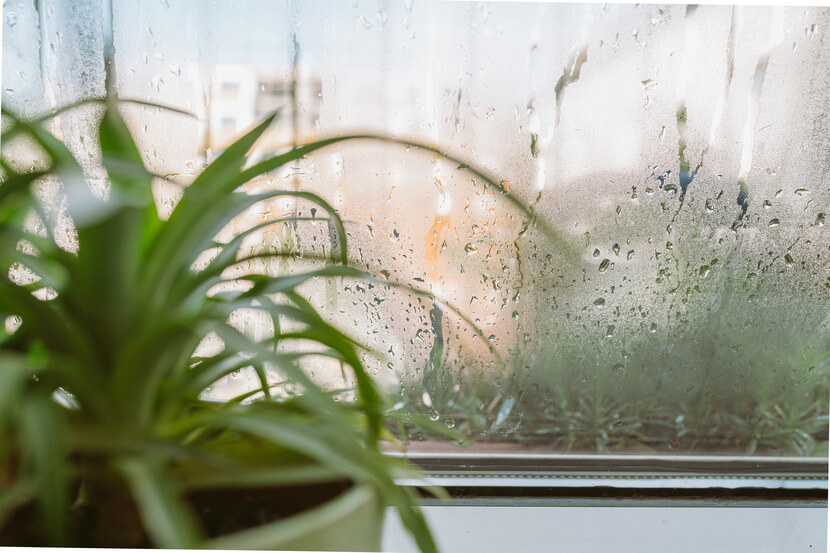
When summer rolls into Illinois, it brings high temperatures and high humidity. That sticky, muggy feeling you get outdoors can easily make its way inside your home if you’re not careful. If the air in your house feels damp, clammy, or just uncomfortable, the issue could be your indoor humidity levels.
So, what should indoor humidity be in summer? The ideal range is between 30% and 50%. Keeping your indoor humidity in this range not only helps you stay comfortable, but it also protects your home, your health, and your HVAC system.
In this blog, we’ll explain why humidity control matters, how to measure and manage it, and what to do if your home is consistently too humid.
Why Summer Humidity Gets Out of Control
Humidity refers to the amount of moisture in the air. During summer in Illinois, outdoor humidity levels often soar to 70% or higher. Without proper insulation and ventilation, outside moisture can seep inside through windows, doors, crawlspaces, and even the foundation of your home.
Indoor humidity can also rise because of poor HVAC performance. If your air conditioner is outdated, incorrectly sized, or not functioning properly, it might not remove enough moisture from the air during cooling cycles. This can leave your house feeling warm and damp, even when the AC is running constantly.
The Importance of Keeping Indoor Humidity Low in Summer
Maintaining 30% to 50% indoor humidity during summer is the sweet spot. Here’s why it’s so important:
1. Comfort
Air with too much humidity makes your body feel hotter than it really is because sweat can’t evaporate properly. Keeping your home in the 30 to 50% range makes rooms feel cooler, so you stay comfortable without needing to constantly lower the thermostat.
2. Energy Efficiency
When humidity levels are balanced, your air conditioner doesn’t have to work as hard. This improves energy efficiency and helps lower utility bills.
3. Health
Excessive humidity promotes the growth of mold, mildew, and dust mites. These can trigger allergies, asthma, and other respiratory issues. Proper humidity helps keep the air cleaner and healthier to breathe.
4. Home Protection
Too much moisture can warp wood floors, peel paint, and damage furniture or electronics. Maintaining the right humidity range protects your home’s structure and your belongings.
Signs Your Indoor Humidity Is Too High
If you’re unsure whether your home is too humid, look out for these common signs:
- Condensation on windows or glass doors
- A damp or musty smell, especially in basements or closets
- Warped wood, peeling paint, or bubbling wallpaper
- Mold spots on walls, ceilings, or HVAC vents
- Feeling sticky or uncomfortable indoors
If you notice any of these signs, it’s time to check your humidity levels and take action.
How to Measure Indoor Humidity
You can monitor humidity using a simple tool called a hygrometer. These devices are affordable, easy to find online or at hardware stores, and often come combined with indoor thermometers.
Place the hygrometer in key areas of your home—like living rooms, bedrooms, or basements—and check it regularly. If readings are consistently above 50%, especially during the summer, your home may need humidity control.
How to Control Summer Humidity Indoors
Managing indoor humidity in summer starts with your HVAC system, but there are a few additional strategies that can help:
Upgrade or Service Your Air Conditioner
Your AC doesn’t just cool your home—it also removes moisture from the air as it operates. If your system is older, undersized, or hasn’t been maintained, it may not dehumidify effectively. Scheduling professional AC maintenance can help you determine whether a repair, tune-up, or replacement is the best next step.
Use a Whole-Home Dehumidifier
A whole-house dehumidifier integrates directly with your HVAC system and works to maintain the perfect humidity throughout your entire home. These systems are more efficient than small, portable units and require less maintenance.
Ventilate High-Moisture Areas
Bathrooms, laundry rooms, and kitchens generate a lot of moisture. Make sure exhaust fans are working properly, and run them during and after showers, cooking, or laundry. This helps control humidity at the source.
Seal Leaks and Improve Insulation
Sealing gaps around windows, doors, and basement walls can prevent outside humidity from entering. Adding insulation also helps stabilize indoor conditions.
What Happens If Humidity Is Too Low?
While this blog focuses on summer humidity, it’s worth noting that levels below 30%—common in winter—can also cause problems. Dry air can lead to itchy skin, cracked wood, and more static electricity. Just like with high humidity, balance is key.
Let Pearson Help You Take Control of Your Space
Now that you know what indoor humidity should be in summer, don’t wait to get your home back to a comfortable, healthy state. At Pearson Plumbing, Heating & Pest Control, our HVAC experts are here to help you maintain the right humidity year-round.
We offer:
- Expert HVAC inspections and AC tune-ups
- Professional installation of new, energy-efficient AC systems
- Other home comfort solutions tailored to your home’s needs
Call Pearson today to schedule an AC inspection. We’ll help you beat the summer heat—and the humidity—with solutions you can trust.
